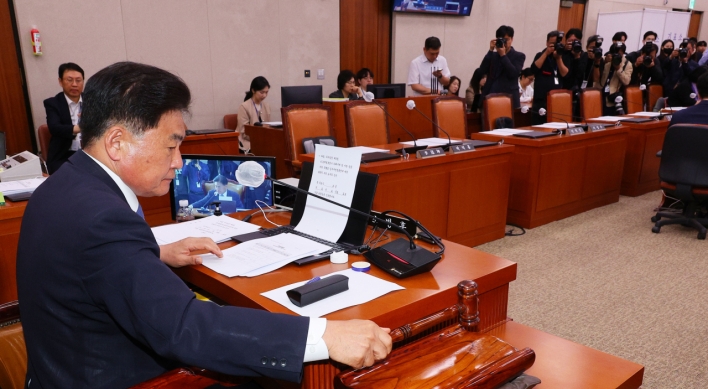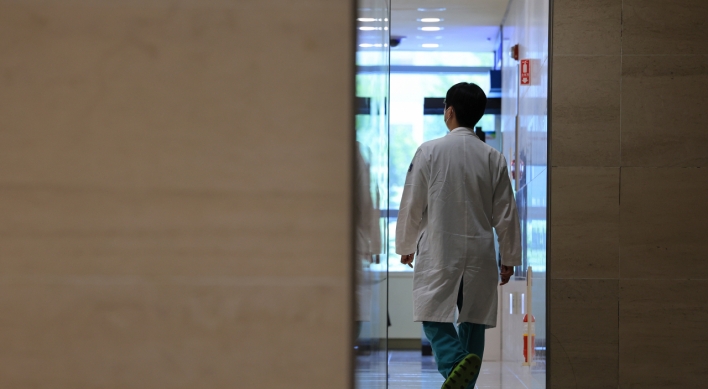[Robert J. Fouser] Looking back at the 2010s in South Korea
By Robert J. FouserPublished : Dec. 17, 2019 - 17:12
 In a couple of weeks, we will enter the third decade of the 21st century. For South Korea, the 2010s saw continued progress amid anxiety over the future. The decade began with solid, though not spectacular, economic growth as the world recovered from the 2007-08 financial crisis, although the crisis affected South Korea less than most other developed nations.
In a couple of weeks, we will enter the third decade of the 21st century. For South Korea, the 2010s saw continued progress amid anxiety over the future. The decade began with solid, though not spectacular, economic growth as the world recovered from the 2007-08 financial crisis, although the crisis affected South Korea less than most other developed nations. South Koreans gained confidence from weathering an economic storm better than most. Toward the end of the decade, the aging of the population began to weigh on growth, but South Korea has avoided the cycle of slow growth and rising debt that has affected other economies with a similar demographic profile.
Relations with North Korea, however, showed little progress until the election of Moon Jae-in as president in 2017. The PyeongChang Winter Olympics in 2018 marked an important turning point as warming relations stirred North Korea to reach out of the US. In 2018, President Moon and North Korean leader Kim Jung-un held three summits. In June 2018, US President Donald Trump and Kim Jung-un held the first summit between a US and North Korean leader. In 2019, they had another summit and a meeting at Panmunjom. Warming relations with North Korea spread hope among South Koreans for a peaceful resolution to long-standing tensions on the Korean Peninsula.
The K-pop boom, which built on Hallyu (the Korean Wave) in the 2000s, greatly enhanced South Korea’s standing on the global stage. Whereas Hallyu was centered on nearby Asian nations, the K-pop boom had global reach. In 2012, Psy’s video “Gangnam Style” became the most watched video on YouTube, a position it held until early 2017.
South Koreans often lament that their politics is not as developed as the economy, but the situation improved as the decade moved on. In late 2016, Park Geun-hye became the second president to be impeached but the first to be removed from office according to a Constitutional Court decision. Four months passed after impeachment until the election of a new president. During this time, then Prime Minister Hwang Kyo-ahn served as acting president. South Korea weathered this “president-less” period well, which helped the smooth transition to newly elected president in May 2017.
The 2010s witnessed social progress as well. Educational levels continued to rise as younger well-educated generations entered social life. By the end of the decade, South Korea boasted one of the highest levels of educational attainment in the world, with the 25-34 age group the highest in the world. Life expectancy continued to increase, putting South Korea in the top 10. In 2018, life expectancy for women was the fourth-longest in the world.
At the end of the 2010s, South Koreans can be justifiably proud that they live in a stable, prosperous, and democratic country with rising international influence. If so, then where does the anxiety over the future come from?
The Sewol ferry disaster in 2014 left 304 dead, including 250 students from Danwon High School in Ansan. The disaster shocked the nation at a time of rising confidence and served as a reminder that, for all the progress, South Korean society faces serious challenges.
The glow from warming of relations with North Korea began to fade in 2019 as tensions between the US and North Korea resurfaced. Hopes for reconciliation have been dashed before, and the cooling of relations has caused the return of cynicism.
Increasing tensions between the US and China after Donald Trump became president weighed on South Korea as it tried to maintain positive relations with countries. Relations with Japan, meanwhile, took a sharp negative turn at the end of the decade, causing fears that South Korea would be isolated from the Japan and the US, its traditional allies in the region.
The last half of the decade witnessed rapidly spreading worries about air pollution, particularly fine dust that blankets the nation during ever greater periods of the year. Hotter summers and more frequent typhoons have forced discussions about the impact of climate change on South Korea.
More than worries about North Korea and relations with neighboring powers, worries about the environment and a rapidly aging population left South Koreans fearful of the future. Quietly, ever so quietly, South Koreans began to question whether the country would remain habitable and whether Koreans themselves would eventually become extinct. The new decade will begin to provide some clarity as to how South Korea will address these basic questions.
Robert J. Fouser
Robert J. Fouser, a former associate professor of Korean language education at Seoul National University, writes on Korea from Pawtucket, Rhode Island. He can be reached at robertjfouser@gmail.com -- Ed.









![[Kim Seong-kon] Democracy and the future of South Korea](http://res.heraldm.com/phpwas/restmb_idxmake.php?idx=644&simg=/content/image/2024/04/16/20240416050802_0.jpg&u=)









![[Today’s K-pop] Zico drops snippet of collaboration with Jennie](http://res.heraldm.com/phpwas/restmb_idxmake.php?idx=642&simg=/content/image/2024/04/18/20240418050702_0.jpg&u=)